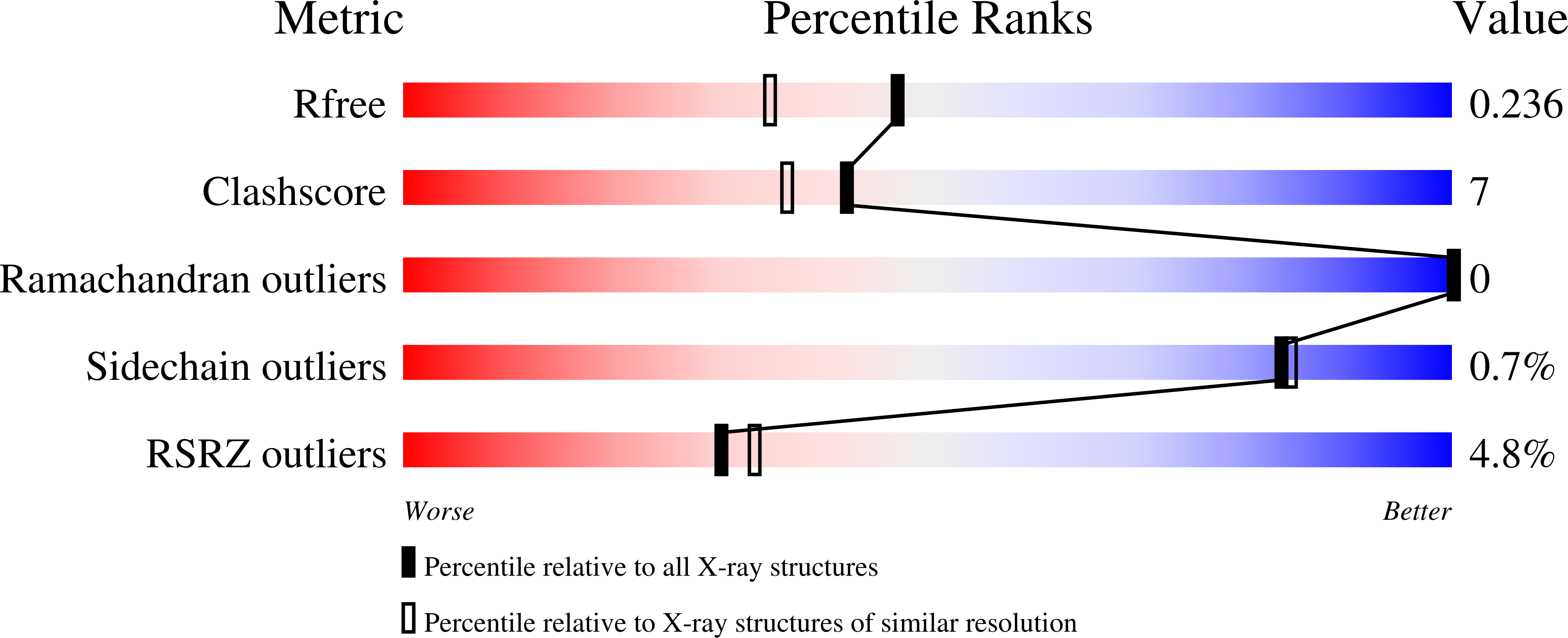The putative catalytic bases have, at most, an accessory role in the mechanism of arginine kinase.
Pruett, P.S., Azzi, A., Clark, S.A., Yousef, M.S., Gattis, J.L., Somasundaram, T., Ellington, W.R., Chapman, M.S.(2003) J Biol Chem 278: 26952-26957
- PubMed: 12732621
- DOI: https://doi.org/10.1074/jbc.M212931200
- Primary Citation of Related Structures:
1P50, 1P52 - PubMed Abstract:
Arginine kinase is a member of the phosphagen kinase family that includes creatine kinase and likely shares a common reaction mechanism in catalyzing the buffering of cellular ATP energy levels. Abstraction of a proton from the substrate guanidinium by a catalytic base has long been thought to be an early mechanistic step. The structure of arginine kinase as a transition state analog complex (Zhou, G., Somasundaram, T., Blanc, E., Parthasarathy, G., Ellington, W. R., and Chapman, M. S. (1998) Proc. Natl. Acad. Sci. U. S. A. 95, 8449-8454) showed that Glu-225 and Glu-314 were the only potential catalytic residues contacting the phosphorylated nitrogen. In the present study, these residues were changed to Asp, Gln, and Val or Ala in several single and multisite mutant enzymes. These mutations had little impact on the substrate binding constants. The effect upon activity varied with reductions in kcat between 3000-fold and less than 2-fold. The retention of significant activity in some mutants contrasts with published studies of homologues and suggests that acid-base catalysis by these residues may enhance the rate but is not absolutely essential. Crystal structures of mutant enzymes E314D at 1.9 A and E225Q at 2.8 A resolution showed that the precise alignment of substrates is subtly distorted. Thus, pre-ordering of substrates might be just as important as acid-base chemistry, electrostatics, or other potential effects in the modest impact of these residues upon catalysis.
Organizational Affiliation:
Departments of Chemistry and Biochemistry and Biological Science and the Institute of Molecular Biophysics, Florida State University, Tallahassee, Florida 32306-4380, USA.


















